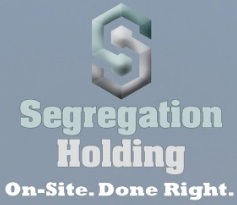Did you get your interest-free loan from the IRS yet? If not, it’s not too late!
If you own commercial or residential rental property, you actually have your very own bank…sorta! Let me explain…
If your property is not a leasehold improvement (we’ll address that shortly) you have been dutifully deducting 1/39th or 1/27.5th of it’s value each year. These figures represent the small percentage you have depreciated each year you have owned your building…1/39th is for commercial and 1/27.5th is for residential rental. Example: you purchased your commercial building 20 years ago for $39,000…each year you have received $1,000 in depreciation, which means after 20 years you’ve taken $20,000 in depreciation with $19,000 remaining. In you are in a 30% tax bracket, you have gotten $300/year off your income taxes, or $6,000 over the last 20 years. The same principle applies to residential rental property but is done over 27.5 years. Leasehold improvements are generally depreciated over 15-years.
Over the life of your property you will have fully depreciated it…27½ years or 39 years. Now, here’s where the “interest-free IRS loan comes in!” The IRS allows components (parts of your building) to be recovered at a faster rate…5, 7 and 15 years…it is called “accelerated depreciation.” If you had your way (and you do), which would you choose?
Cost segregation is the process used to identify those components, mentioned above, that qualify for accelerated depreciation. Typically about 25% of a commercial building’s components qualify for reclassification to those shorter periods of 5, 7 and 15 years. Some will qualify for more, some less. So, for each dollar reallocated by cost segregation from 39-year property to 5-year property, the average benefit equals about 20¢-25¢ in net present value.
Okay, so how does this translate to an “interest-free loan” from the IRS? We’re getting there, so hang with me. Remember the earlier example? We had a $39,000 building which means we get $39,000 in total depreciation regardless of the time period it is depreciated over. Let’s say your building qualifies for that 25% accelerated depreciation, and that 15% is over 5 years and 10% over 15 years. Unlike the 39-year depreciation which is called “straight-line” depreciation, 5- and 15-year depreciation is called MACRS (Modified Accelerated Cost Recovery System) depreciation. The 5-year components (or tangible personal property) are depreciated using a 200% declining balance method and the 15-year components (or land improvements) are depreciated using a 150% declining balance method. This table represents how it works:

Now we’re at the part about the IRS interest-free loan. As you can see from the table, both methods of depreciation add up to the same $39,000. The difference is you increase your depreciation in the first 5 years by $5,847; or, if you’re in the 35% tax bracket, you have received an extra $2,045, courtesy of the IRS interest-free “loan.” You’re getting what is legally available to take out of your property because MACRS gives you that accelerated benefit as a result of cost segregation being applied. It’s loosely a loan because the accelerated benefit is “borrowed” from the years beyond your early years of ownership. Remember, a dollar today is worth more than one tomorrow!
Of course, those reading this own properties purchased or constructed for at least 10 to 20 times this example…some even more. Your results will be multiplied equally…so, if your building is $780,000, then your first 5 years of accelerated depreciation would be $116,940 or an extra $40,929 in your IRS interest-free loan!
Are you ready to apply for your interest-free loan today?
Contributed by Jeffrey M. Hobbs, Director, Segregation Holding Limited


